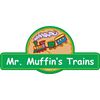Love it? Add to your wishlist
Your favorites, all in one place. Shop quickly and easily with the wishlist feature!
[message]
[title]
[message]











Announcement Date:
Guaranteed Pre-Order Due Date:
Expected Delivery Date:
Individually Boxed:
| Announced Date: | April 2024 |
| Released Date: | Feb 2025 |
| Individually Boxed: | Yes |
Steam DCC Features
In the early part of the twentieth century, most freight moved in relatively slow “drag” freight trains, and speed was secondary to just getting the goods delivered. The introduction of “super-power” steam technology in the 1920’s, however, enabled builders to create freight locomotives that combined speed and power. Perhaps the zenith of the fast freight engine was the 4-6-6-4 Challenger, first conceived by the Union Pacific Railroad and American Locomotive Works in the mid-1930s. The Northern Pacific liked what it saw taking shape at Alco and ordered its own, even bigger Challengers. One reason the NP engines were larger was the railroad’s use of large fireboxes to burn low-quality Rosebud coal mined online in Montana — coal that at least one fireman described as “damned close to dirt.” The first dozen Z-6 Challengers arrived in 1936, just months after the UP received its own first Challengers. Like 4-6-6-4s on the UP and the Western Maryland, the articulated Z-6s replaced older, slower rigid-frame engines — doubleheaded Mikados in the Northern Pacific’s case. The Z-6s spent most of their careers hauling reefer trains and fast freights on Northern Pacific divisions in Washington State and Montana’s Big Sky country, with occasional passenger stints leading the crack North Coast Limited. Sixty-nine inch drivers allowed a Z-6 to maintain 60 mph on the plateaus between the Northwest’s mountain ranges.
The Northern Pacific was pleased enough with its new articulateds to order nine more Z-6s in 1937. The same year, an additional six engines were ordered for the Spokane, Portland & Seattle, a jointly-owned subsidiary of the NP and the Great Northern. The SP&S engines were oil burners, but virtually identical to the NP Z-6s in every other way. Two of the SP&S engines were later sold to the Great Northern for use in Washington and Oregon. For a time in the late steam era, the thundering Z-6 was indeed the Northwest’s own articulated.
177 W Main St
Atlanta, IN 46031
765-292-2022
support@mrmuffinstrains.com
Sign up for our newsletter and be the first to know about coupons and special promotions.
© 2025, MrMuffin'sTrains Powered by Shopify
